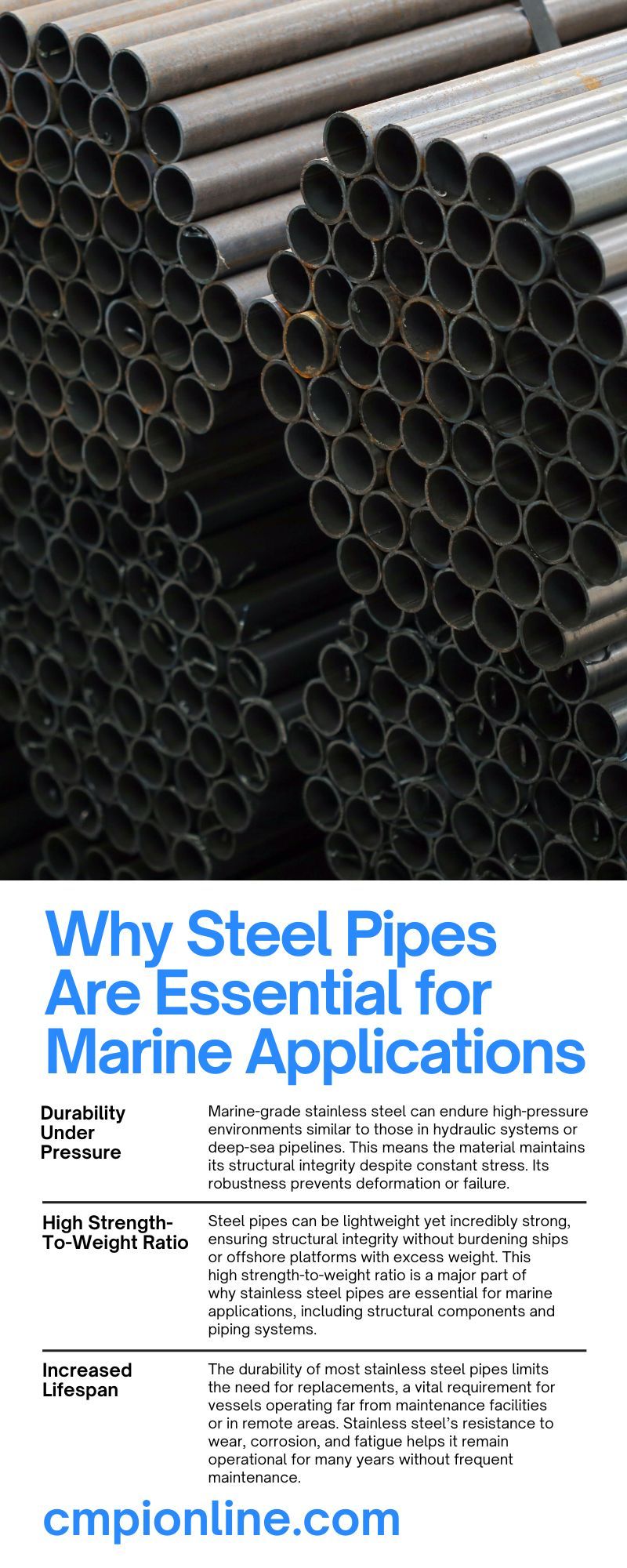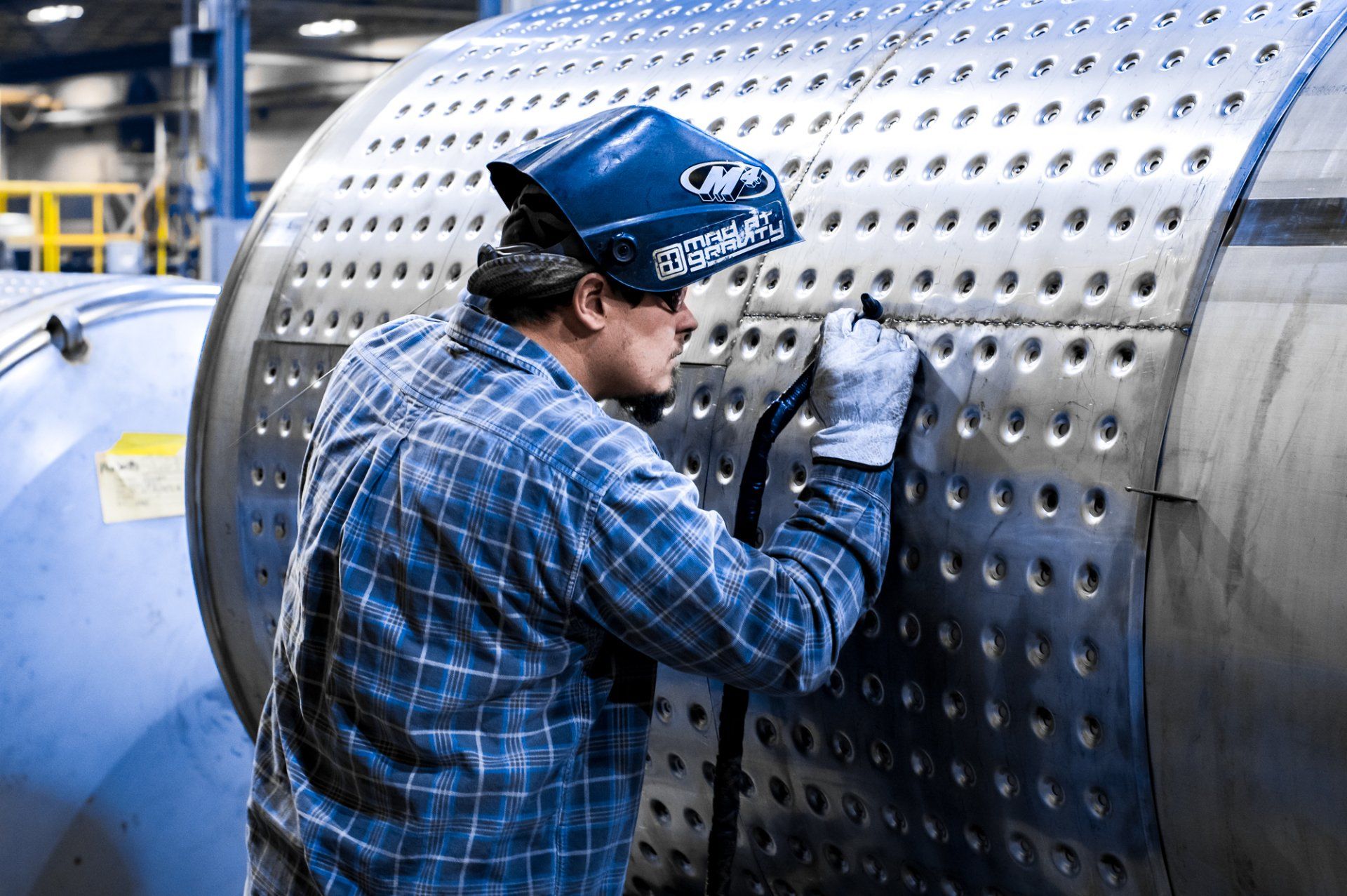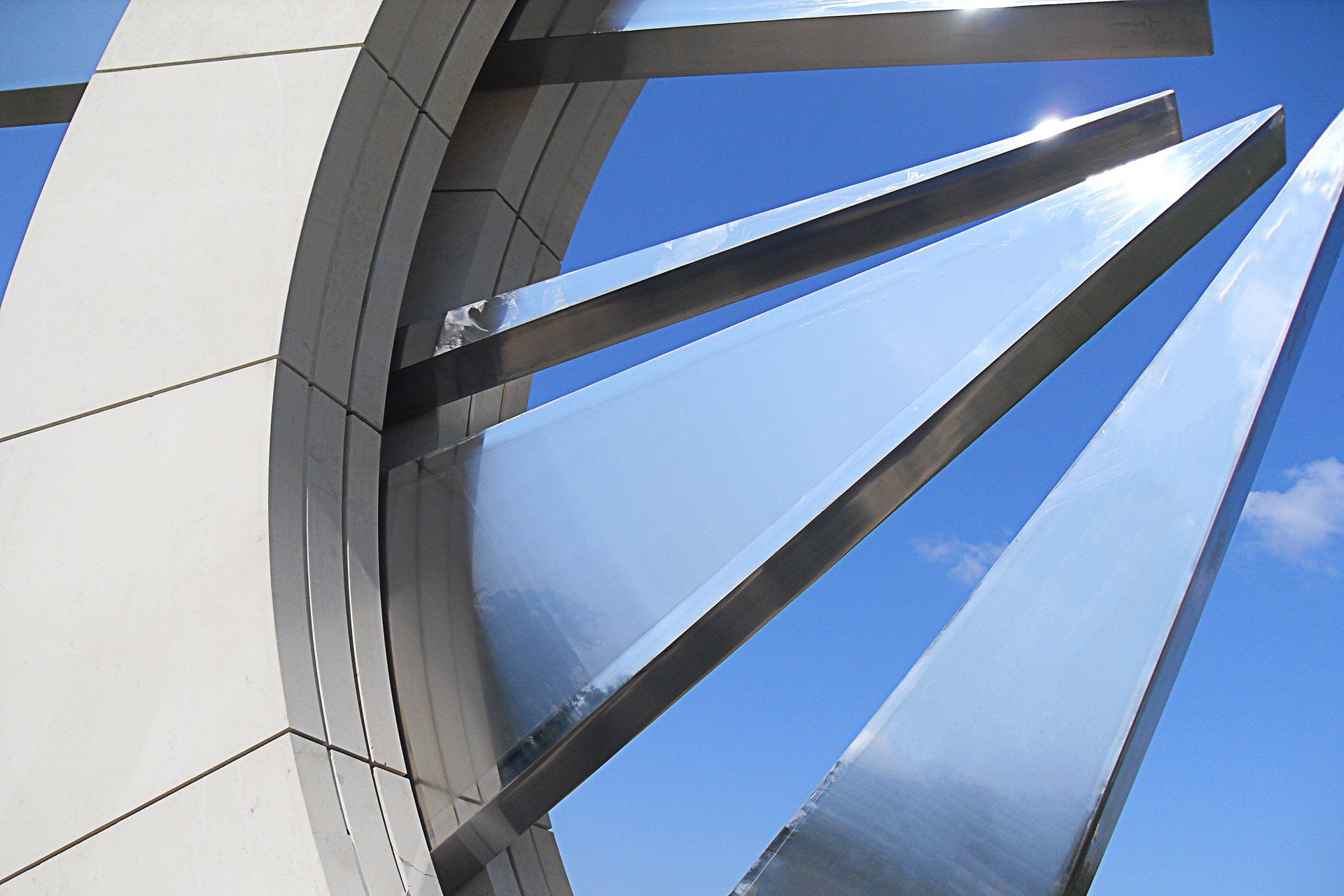Why Steel Pipes Are Essential for Marine Applications

Ships, submarines, and offshore rigs need to withstand harsh environments. Saltwater is incredibly corrosive to most metals, causing deterioration that can compromise the safety and reliability of a structure. To combat this, marine-grade stainless steel typically contains molybdenum—a key ingredient that enhances the material's natural resistance to saltwater-induced pitting and cracking. Keep reading to learn more about why steel pipes are essential for marine applications.
Key Benefits of Steel Pipes in the Marine Industry
Corrosion resistance is only one of the benefits stainless steel piping brings to the marine industry. Additional qualities that shipbuilders and marine engineers find useful include:
- Durability under pressure
- High strength-to-weight ratio
- Increased lifespan
- Heat resistance
- Versatility in application
- Safe for the environment
Let's take a closer look at these features.
Durability Under Pressure
Marine-grade stainless steel can endure high-pressure environments similar to those in hydraulic systems or deep-sea pipelines. This means the material maintains its structural integrity despite constant stress. Its robustness prevents deformation or failure.
High Strength-To-Weight Ratio
Steel pipes can be lightweight yet incredibly strong, ensuring structural integrity without burdening ships or offshore platforms with excess weight. This high strength-to-weight ratio is a major part of why stainless steel pipes are essential for marine applications, including structural components and piping systems.
Stainless steel’s ability to maintain strength while reducing overall weight also improves fuel efficiency and enhances a vessel’s performance. And, by minimizing the need for bulky materials, lightweight stainless steel can contribute to the ship’s handling and stability.
Increased Lifespan
The durability of most stainless steel pipes limits the need for replacements, a vital requirement for vessels operating far from maintenance facilities or in remote areas. Stainless steel’s resistance to wear, corrosion, and fatigue helps it remain operational for many years without frequent maintenance.
This longevity translates directly into reduced long-term costs, as fewer replacements and repairs are needed, making stainless steel an economical choice for marine projects. Additionally, stainless steel's ability to maintain its performance helps to minimize downtime, providing long-term reliability for vessels that are often on extended voyages.
Heat Resistance
Marine systems frequently operate under extreme temperatures. Stainless steel pipes can efficiently handle both high and low temperatures, making them a good fit for exhaust systems, heat exchangers, and other thermal systems.
Versatility in Application
From cruise liners to agile speedboats and oil rigs, engineers can adapt stainless steel pipes to various marine projects. They can find custom polishing and fabrication services that tailor pipes for specific applications.
Safe for the Environment
Stainless steel pipes can help reduce the overall environmental impact of maritime operations by preventing pollution caused by corrosion and leaks. Stainless steel is also 100% recyclable, further minimizing its environmental footprint.
Advantages Over Alternative Materials
There are multiple reasons why engineers opt for stainless steel piping over alternatives such as copper, PVC, or galvanized steel.
For example, copper is susceptible to dezincification and can degrade faster in salty marine environments. Stainless steel offers far greater longevity and resistance.
While PVC is lightweight and corrosion-resistant, it can't handle the high pressures and temperatures that stainless steel can, making it unsuitable for some marine systems.
Galvanized steel is cheaper than stainless steel, but it has a shorter lifespan in marine environments due to its susceptibility to rust and corrosion. It also lacks the strength-to-weight ratio of stainless steel.
Steel Pipes in Marine Projects
Stainless steel pipes are widespread in the marine industry. Some of the most common applications include:
- Desalination plants on offshore platforms
- Advanced cooling systems
- Ballast systems
- Fuel and hydraulic systems
Here’s a deeper dive into these applications.
Desalination Plants on Offshore Platforms
Marine stainless steel pipes are integral to desalination systems, which convert seawater into potable water. The pipes must withstand high pressures and corrosive saltwater, which stainless steel can handle with ease.
Advanced Cooling Systems
You can also find stainless steel in advanced cooling systems on ships, such as heat exchangers and condensers. These systems help regulate temperatures and prevent engine failure, making them crucial for operations. Using stainless steel pipes helps here because engineers don’t have to worry about blockages caused by corrosion, which means that coolant can circulate freely.
Ballast Systems
Ships balance their weight with ballast water to maintain stability at sea. Stainless steel pipes can pump and transport seawater for ballast systems without corroding, preventing potential pollution from leaks.
Additionally, stainless steel is resistant to biofouling, which is a common issue with other materials that some people use in ballast systems. Biofouling describes the buildup of organisms and other marine life on surfaces in contact with seawater.
Fuel and Hydraulic Systems
Fuel and hydraulic systems also depend on stainless steel pipes because these systems require exceptional sealing and a corrosion-resistant conduit. These pipes must resist corrosion from both the liquids they carry and the constantly changing marine environment. Stainless steel helps maintain fuel purity by preventing contamination and chemical reactions.
Emerging Trends and Innovations in Marine Stainless Steel
As the marine industry evolves, so do the applications and technologies involving stainless steel. Innovative techniques such as 3D printing of stainless steel components continue to gain traction in the marine sector. This advancement allows for more complex designs and the production of custom parts that fit highly specific needs.
Additionally, there is a growing trend toward incorporating even more sustainable practices in marine operations. Stainless steel, with its recyclability and low environmental impact, aligns perfectly with modern sustainability goals, driving the material's increased use in green technologies.
Unlike other metals that can quickly degrade, stainless steel’s ability to withstand the rigors of a marine environment means fewer replacements and repairs, directly benefiting the planet by reducing waste. Furthermore, when you recycle stainless steel, you can reduce overall energy consumption in the manufacturing process.
When it comes to marine engineering or shipbuilding, cutting corners with cheap or flimsy materials is not an option. Stainless steel pipes offer the perfect combination of strength, durability, and performance that marine projects demand. By investing in high-quality stainless steel systems, professionals can ensure safer operations and reduce their long-term costs.
If you’re looking for stainless steel solutions tailored to your project, explore how CMPI can support your marine goals with expert-crafted, custom stainless steel.






